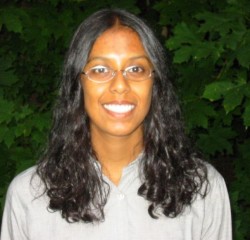LGBT Patients Lack Online ART Educational Materials
The Supreme Court case Obergefell vs Hodges legalized same-sex marriage throughout the United States on June 26, 2015, restating the fundamental right of same-sex couples to marry. More than one year later researchers at BUSM examined the evolving healthcare access involving the lesbian, gay, bisexual and transgender (LGBT) community as more couples marry and begin families with assisted reproductive technology (ART).
 Shoumita Dasgupta
Shoumita Dasgupta
In the recently published study that appeared in the journal Human Reproduction, corresponding author Shoumita Dasgupta, PhD, associate professor of Medicine, and BUSM student Helen Jin identified a gap in availability of online education materials regarding ART to LGBT couples compared to heterosexual couples. The researchers reviewed all Centers for Disease Control and Prevention (CDC) registered fertility center websites in 2014 and 2015. They found that the majority of the websites do not include education information targeted toward LGBT patients, although over time the number of websites including LGBT patients is increasing.
“Differential healthcare access impacted by sexual orientation or gender identity in the fertility setting adds to health care disparities between LGBT patients and the overall patient population,” explained Dasgupta. Importantly, reduced access to fertility services by LGBT patients impacts their ability to expand their families with biologically-related children. Simple initiatives may be instituted to support inclusion of the underserved LGBT community in fertility practices such as description of services for LGBT patients on fertility clinic websites and creation of welcoming clinical practice environments .
The authors concluded, “As part of adapting to constantly changing societal and practice environments, addressing these disparities to provide culturally competent care should become a high priority initiative for practitioners in this area.”
Funding for this study was provided by the Medical Student Summer Research Scholarship through the Barbur Khalique Foundation
Submitted by Sherry Yan, MD.
View all posts